Best fish tank cleaners 2025 to keep fish healthy and tanks sparkling
Keep your aquarium in top shape with the best fish tank cleaners
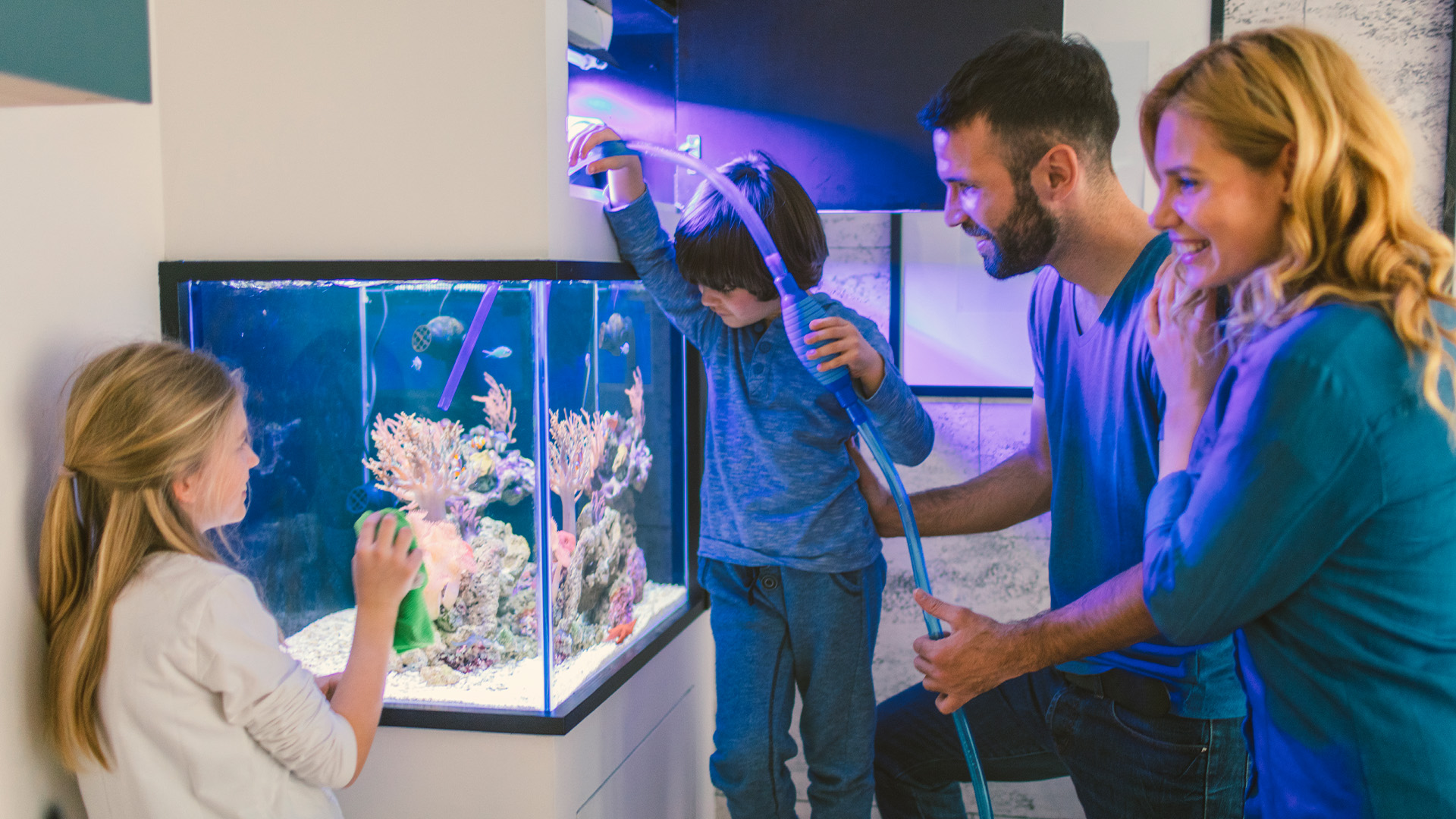
Dirty aquatic environments can kill so it’s important to invest in one of the best fish tank cleaners to keep your fish healthy. With the correct equipment, you can keep tanks looking sparkling, ridding them of green swirls of algae, fish poop and general dirt. You’ll also be able to see your fish with greater clarity, allowing you to enjoy a colorful aquatic display and see your favourite fish tank accessories.
“Fish tanks and aquariums must be kept clean otherwise it can negatively affect the health and welfare of your pets,” affirms expert vet Dr Rebecca MacMillan. But, knowing that clean tanks are the best fish tanks, which products should you choose? The answer to that depends on the type of tank you own – there are, for instance, products that are best suited for glass and others more ideal for acrylic.
You can buy chemicals, although they’re not recommended if you have live plants. On the other hand, there are plenty of tools that do the job in different ways. In general, there are long-handled products that let you scrub up and down the insides of the glass and there are magnetic devices that sandwich your glass and allow you to scrub them up and down in the same way.
The best fish tank cleaners we recommend in 2025
Why you can trust PetsRadar
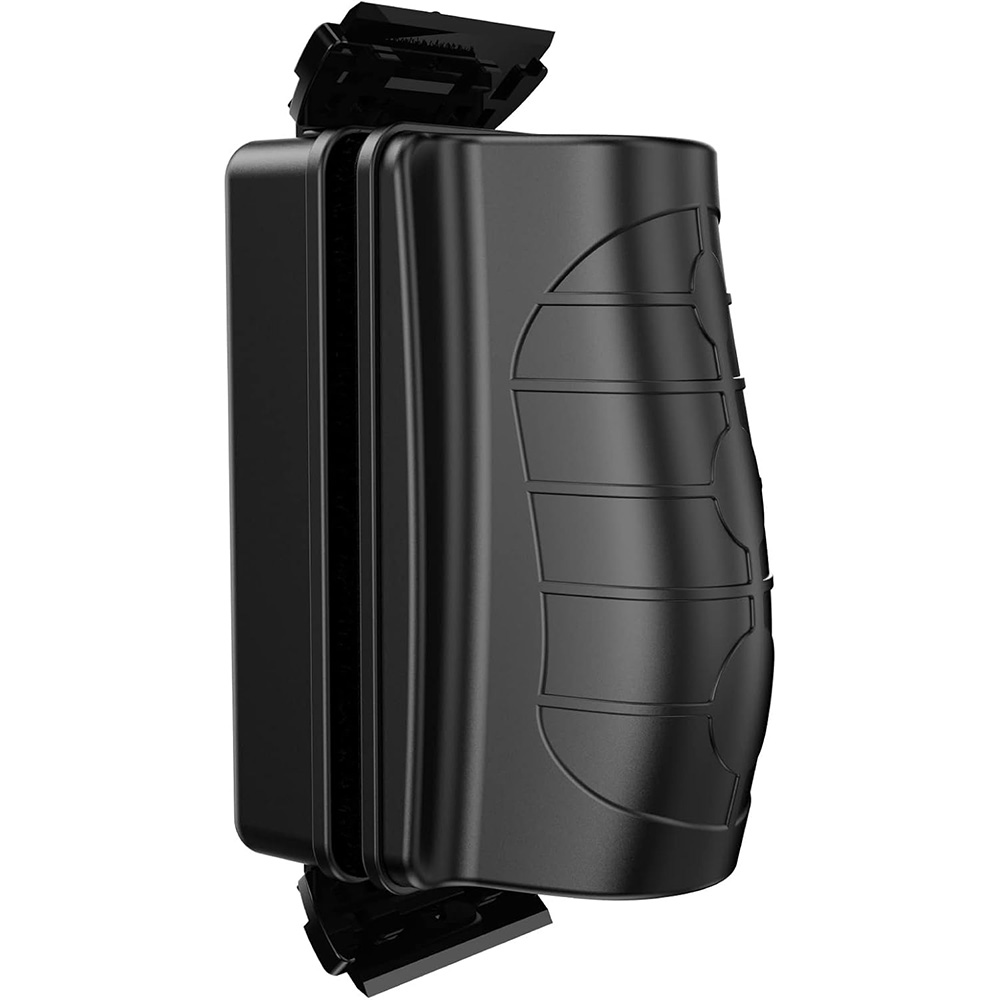
Best overall fish tank cleaner
The best way to clean the inside of your fish tank glass is with a two-piece magnetic scraper and this is one of the best we’ve seen. To explain, you get two pieces – one of which goes inside the tank and the other outside. These are connected via magnets through the tank’s glass – as you move the outer piece, it drags the inner one through any algae and dirt. The waste is then dispersed into the main body of water to be collected by the filter or removed as part of a water change.
This scrubber is a particularly well-thought-out example. It comes in four sizes, and, as the size increases, the magnet becomes stronger to take account of the thicker glass found on larger tanks. The inner part of the cleaner also floats, so if it becomes detached you don’t need to fish around at the bottom of the tank. It also comes with a pair of detachable scrapers for removing really stubborn attached dirt.
Even so, it’s possible to send the inner half across the tank with an ill-judged movement that overcomes the magnetic attraction. Tank gunk will also stick to the piece so you’ll need to occasionally remove it periodically for cleaning.
Reasons to buy: With a strong magnet and ability to float, this scraper makes light work of cleaning with minimum fuss.
Reasons to avoid: The device is not suitable for acrylic tanks, the magnets can come unstuck and their inner piece will get dirty.
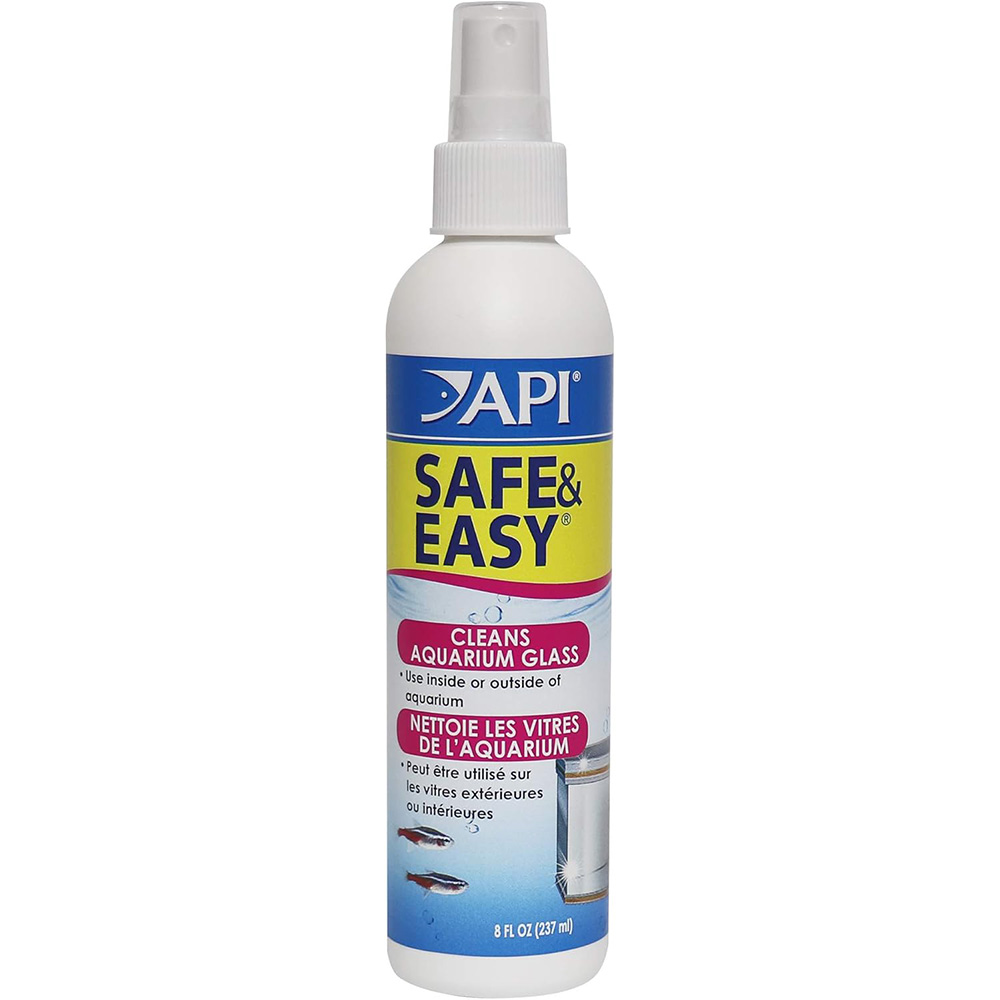
Best spray fish tank cleaner
Whether you’re whipping out a cloth to scrub the outside of a tank or looking to get the interior glass or acrylic looking shiny, you will need some kind of safe cleaner. This aquarium spray fits the bill, coming in spray form for convenience and capable of cutting through any white, crusty mineral deposits that may have accumulated on the tank and the filter.
Safe for fish and plants, it’s easy to apply – it’s as simple as spraying, waiting a few minutes then wiping away with a damp cloth or sponge (although you may need to do this a few times if you have a particularly dirty tank).
The spray works effectively on both glass and acrylic and it also leaves behind a protective coating so that you don’t need to get to work as regularly in the future. Combine this with one of the other products on text – magnetic device or a scraper for instance, and you should find the cleaning regime is rather effortless. It’s worth bearing in mind that some users say it can leave streaks but, in general, the reaction is very positive with the overwhelming number of people saying it works a treat on their tanks.
Reasons to buy: You can’t just use water to keep a tank clean and this cleaning solution is going to cut through the muck.
Reasons to avoid: There are a small number of reports that the cleaner has been leaving streaks on tanks.
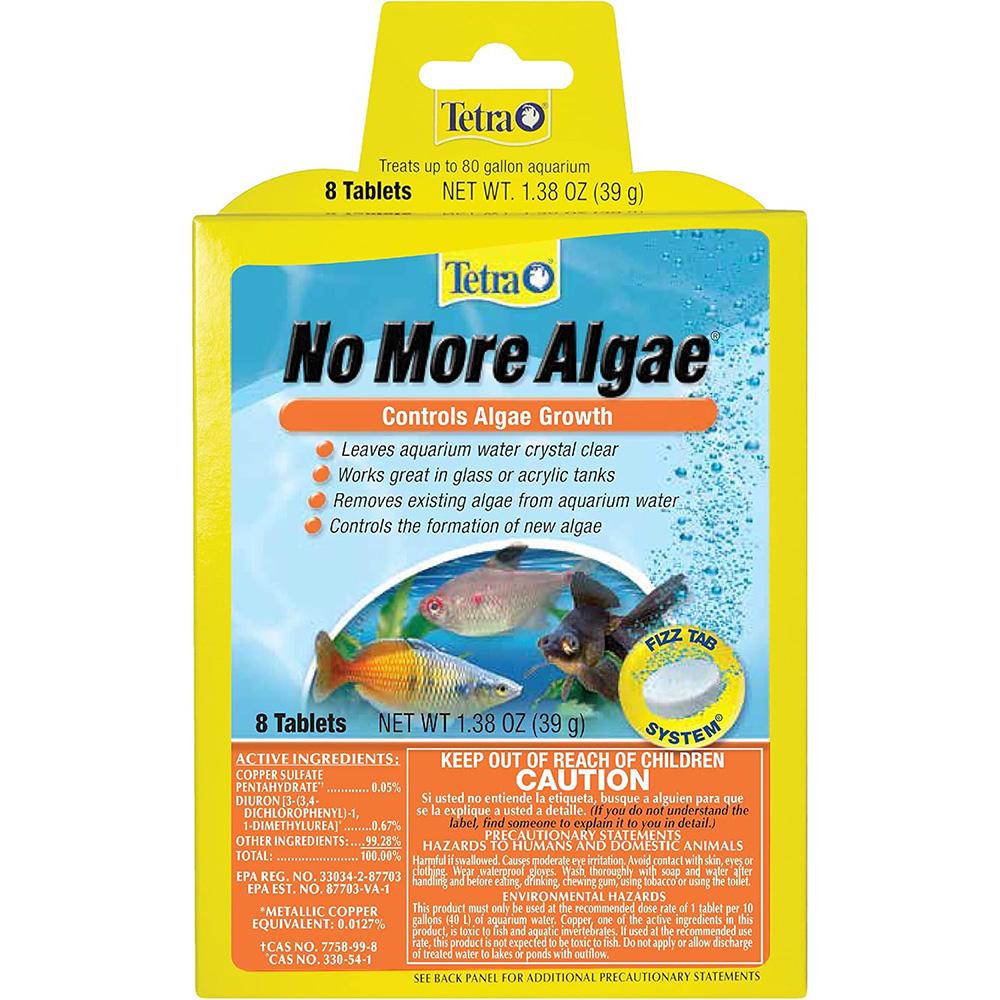
Best tablet fish tank cleaner
Chemical treatment may not be the most convenient way to clean a fish tank – it won’t tackle fish waste or anything other than algae – but it’s an effective short term fix, keeping your water sparkling while you decide how to prevent future regrowth.
Here, you get a pack containing eight tablets, which is enough to treat 80 gallons of water. When the algae dies and sloughs off into the water, it can be picked up by the filter or, in the case of large blooms, it can simply be removed using a net. It works in glass and acrylic tanks too.
In that sense, Tetra offers a good budget solution for removing an algal infestation of your tank but there are some things to bear in mind. You can’t use this in a tank with live plants because it will kill them. You should need to avoid using it if you have snails or turtles in the tank (the fish are not affected). The chemical is also harmful if you swallow it, get it on your skin or your eyes. You will need to remove carbon filtration from the tank before you use it, too.
As a one-shot control measure before settling into a more regular cleaning routine, however, these fizzing tablets from Tetra are a good place to start.
Reasons to buy: These tablets are an effective way to rid tanks of algae, controlling new growth and leaving water clear.
Reasons to avoid: You can’t use it in tanks with live plants and/or turtles and you must keep it away from children.
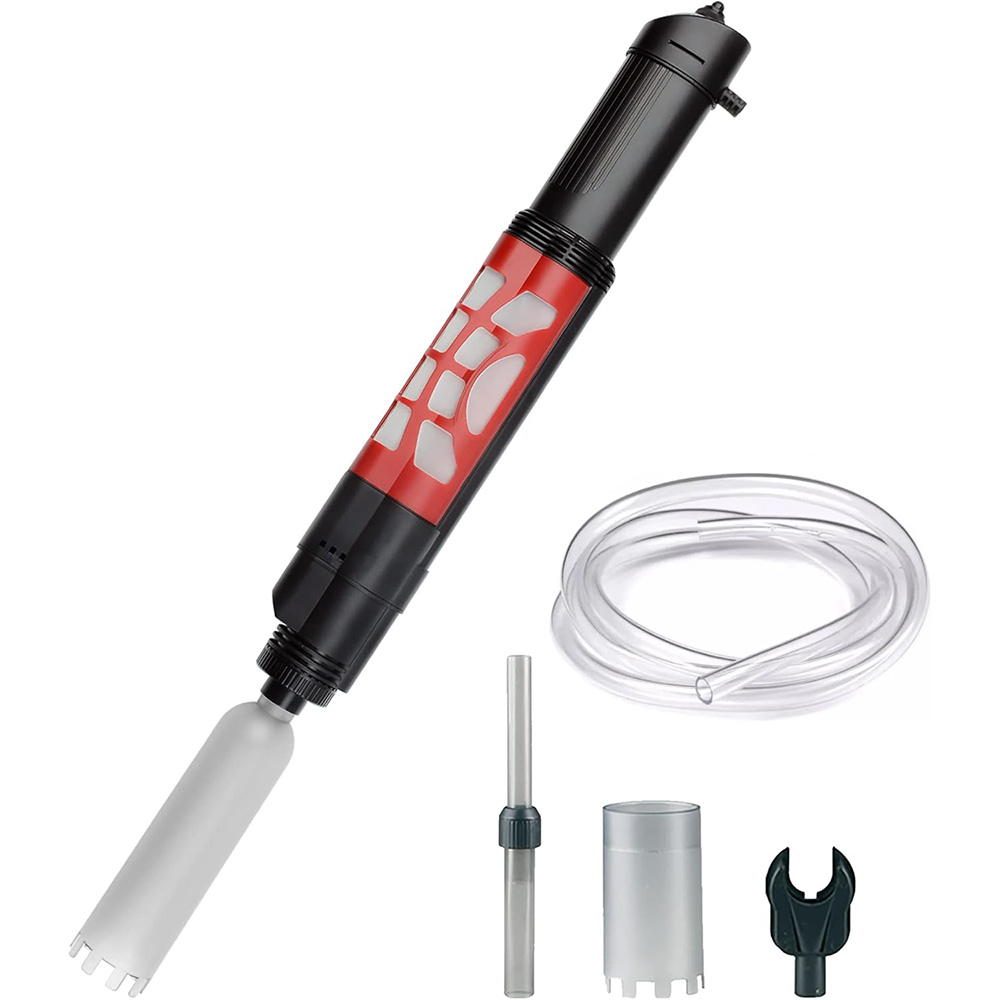
Best electric fish tank cleaner
If you want a quick way to clean your tank on the go, then a gravel cleaner is a worthwhile investment. These devices do an excellent job of picking up sludge, waste, and uneaten food that can accumulate on the bottom of a fish tank and while some require you to create a vacuum to syphon the water by sucking on the end of the pipe, you can avoid the potential of an unpleasant mouthful of tank water by going electric.
Battery-powered solutions have been around for a while; this one from Nicrew is a rarity in that it’s mains-powered. It pumps the water through a removable filter before sending it down the waste pipe to a bucket on the floor, and fulfils two purposes: cleaning the debris from the top layer of your fish tank gravel, and enabling you to carry out one of your regular water changes.
You need a minimum water depth of 8.5in, so this might not be suitable for small tanks, or ones only partially filled. Otherwise, its excellent suction power pulls plenty of water through, and if you’re careful not to disturb the gravel too much, you can avoid the hour of cloudy water that often follows cleaning while everything settles.
Reasons to buy: This device requires little effort and it not only cleans gravel but changes water. It comes with its own filter.
Reasons to avoid: The filer can be blocked quickly and you will need to keep an eye on the device at it gets to work.
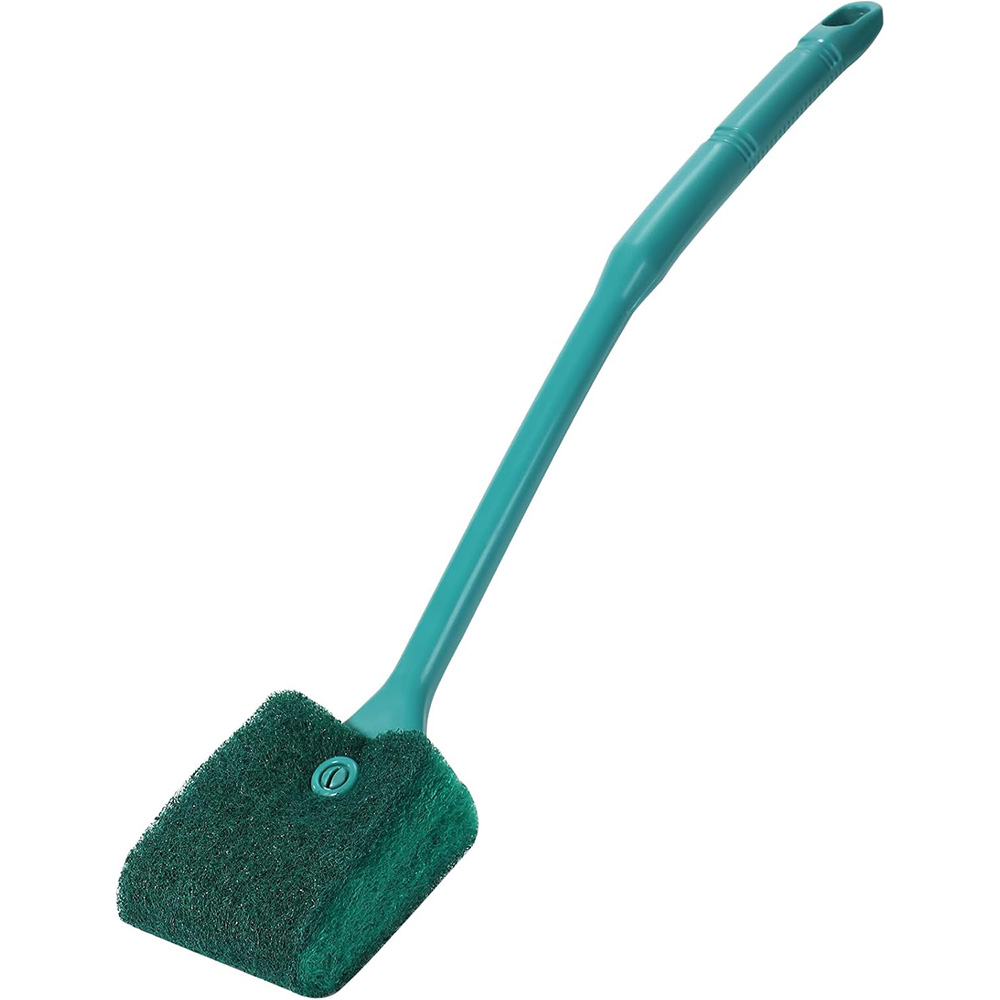
Best brush fish tank cleaner
You can’t really get much simpler than a brush on a long handle and that’s literally what’s on offer here. If you have a glass tank (unfortunately, this brush is not suitable for ones that are made from acrylic) then you can make use of the high quality sponge to quickly remove algae from the inside of the tank.
The comfortable, strong handle will ensure that you can maintain a good grip and control when you are cleaning, which drastically reduces the chance that you’ll accidentally let go of it and leave the brush bobbing in the water. The handle has a hole on the end which means you can hang it up on a hook and allow it to drip-dry once you’re done as well.
It’ll certainly stand up to repeated cleaning with the sponge robust enough to remain in great shape for quite a few cleans before it will need replacing. If you are after a low-cost cleaning tool that you can combine with a cleaning chemical solution then you really can’t go wrong with this one. The only potential issue is that you may not find it as comfortable to work with in smaller tanks.
Reasons to buy: It’s as simple as they come but does the job very well and for a great price too.
Reasons to avoid: The brush may be a little too large for smaller tanks and it will only work with glass tanks.

Best combination fish tank cleaner
Offering a lightweight carbon fiber rod with six attachments on the end, this is not a cleaning tool so much as a complete fish-tank care package.
It comes with a gravel rake for herding uneaten food and debris into piles for easier removal, a scraper for attacking stubborn deposits on the tank walls, a right-angle cleaning sponge for getting right into the corners, a flat sponge for scrubbing the sides, a tube brush for really hard to access areas, and a net for removing floating or piled debris, and catching fish if you really need to.
The telescopic handle means you’ll also be able to reach to the bottom of the largest home tanks but there are some downsides. The kit has been developed with glass aquaria in mind yet the scraper blade is made of (non-replaceable) stainless steel rather than hard plastic – a scratch may be an awkward twist away. This addition also means the kit isn’t suitable for use in acrylic tanks.
Another downside is the amount of flex in the handle when fully extended. Effective cleaning relies on sufficient pressure being applied by the cleaning head to the inside of the tank but with a push, this handle will bend.
Reasons to buy: This is a great, lightweight multipurpose cleaning tool that is easy to use and could be all you need.
Reasons to avoid: You don’t want an entirely manual tool.

How we chose the best fish tank cleaners
We primarily looked at two main features: the effectiveness of a cleaner and how easy it was to use.
We also considered whether there was any potential for damage from overenthusiastic cleaning bearing in mind that regular maintenance should negate the need to give a tank a harsh scrub. In doing so, we kept an open mind.
Although we tend to shy away from chemical treatments, there’s no doubt they can be effective, and relatively cheap as long as you’re not using them every month.
We also wanted to see if the tools we assessed could get into fiddly corners or the bits behind the filters.
How often should I clean a fish tank?
In general, you should be cleaning a fish tank when you notice it’s looking a little grubby. The earlier you tackle the problem, the less of a challenge it will become and the healthier your fish will be. A regular regime of light cleaning beats leaving it until it requires a thorough blitz. Here’s some advice on how to clean a fish tank.
How often that will be depends on numerous factors. For example, according to expert vet Dr Rebecca MacMillan, the type of tank plays a big part.
“How often your tank needs cleaning may depend on its size and the filtration system,” she says. In general, two to four times a month will keep tanks in tip-top shape.
“Partial water changes and cleaning should take place weekly or fortnightly for many tanks,” she adds.
Why is it important to keep tanks clean?
According to Dr MacMillan, you’re literally saving your fish’s life.
“Nitrogen compounds can build to dangerous levels in a dirty fish tank,” she says. “These come from the waste your fish produces, as well as any uneaten food, leading to illness or even death. Measuring nitrate levels and regularly performing partial water changes will be key to keeping on top of this. Levels of harmful bacteria can also increase in dirty tanks, which will negatively affect your pets.”
Cleaning your tank also helps to keep the water crystal clear – if you’re asking yourself “why is my fish tank cloudy?”, an update cleaning regimen could be the answer.
Is there a natural way of keeping a tank clean?
A tank with green swirls of algae growing off every surface and flapping in the current from the filter looks unsightly. It also becomes slimy and matted as it grows ever bigger, eventually requiring the services of a scrubbing brush to remove.
There are many little creatures that like to eat algae, including, Dr MacMillan says, Amano shrimps, bristlenose plecos and Malaysian trumpet snails. Many are attractive and add interest to your tank as they constantly nibble away at every spot of algae that forms. But they’re not necessarily the ultimate time-saving answer you think they might be.
“Don’t forget that these species will be excreting waste, too, so your tank will still need regular cleaning and water changes,” Dr MacMillan explains.
Why is algae dangerous for fish?
Algae are primitive plant-like organisms which settle on hard surfaces and breed by absorbing the light, oxygen and nutrients in the tank. If your aquarium has an abundance of these resources, the algae will proliferate and start to take over, starving your fish of what they need to survive. Much depends on how the algae is building up, though.
“Algae that builds up on the inside of the glass is less likely to be harmful, but it looks unsightly and prevents you from viewing your fish,” Dr MacMillan says.

Rebecca is a vet surgeon who graduated from the Royal Veterinary College in 2009. She has a wealth of experience in first opinion small animal practice, having done a mixture of day-to-day routine work, on-call emergency duties and managerial roles over the years. She enjoys medicine in particular and she is proud to have recently achieved a BSAVA postgraduate certificate in small animal medicine (with commendation). She writes on various feline and canine topics, including behavior, nutrition, and health. Outside of work and writing she enjoys walking her own dog, spending time with her young family and baking!
Get the best advice, tips and top tech for your beloved Pets

David Crookes has been a journalist for almost 30 years and he has written for a host of magazines, newspapers, websites and books including the World of Animals Annual, BBC Earth, Live Science, The Independent and Tom’s Guide.
Born in England, he lives with two cats but he’s also keenly interested in the differences between the huge number of dog breeds – in fact, you can read many of his breed guides that he’s written in collaboration with vets here on PetsRadar.
With a lifelong passion for technology, too, he’s always on the lookout for useful devices that will allow people to keep their pets happier and healthier, and provide them more time to spend together.
David has a degree from Durham University, as well as postgraduate diploma in journalism from the University of Central Lancashire.
